Imaging Projects
In this blog, I will share the results of all of my imaging projects. The newest will be at the top and the oldest will be further down the stack. Going back in time here is interesting - some of my early stuff was pretty rough - but I did not see it that way at the time - I was thrilled to get anything back that looked like an image! Hopefully, you will see how my work has progressed with time!
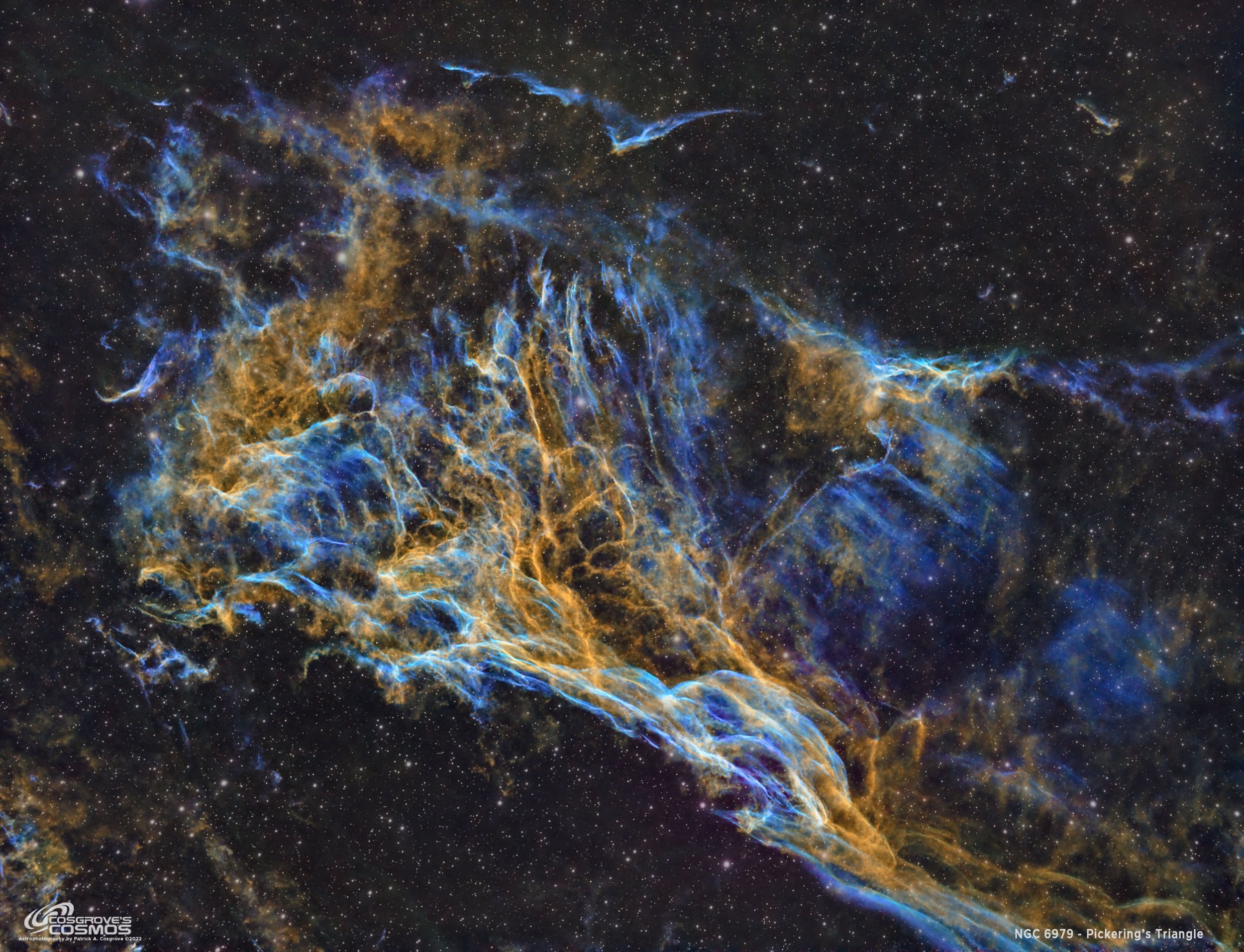
NGC 6979: Pickering’s Triangle ~ 12 hours in SHO
Pickering’s Triangle is a smaller and fainter section of the Cygnus Loop. While most portions of this supernova remnant have NGC catalog designations, Pickering's Triangle does not. It was discovered after the New General Catalog was published and thus missed out! Often NGC 6979 is used for this object but that is not technically correct. This image is the result of ~12 hours of narrowband exposure taken with my William Optics 132mm FLT APO Platform and rendered using the Hubble SHO palette.
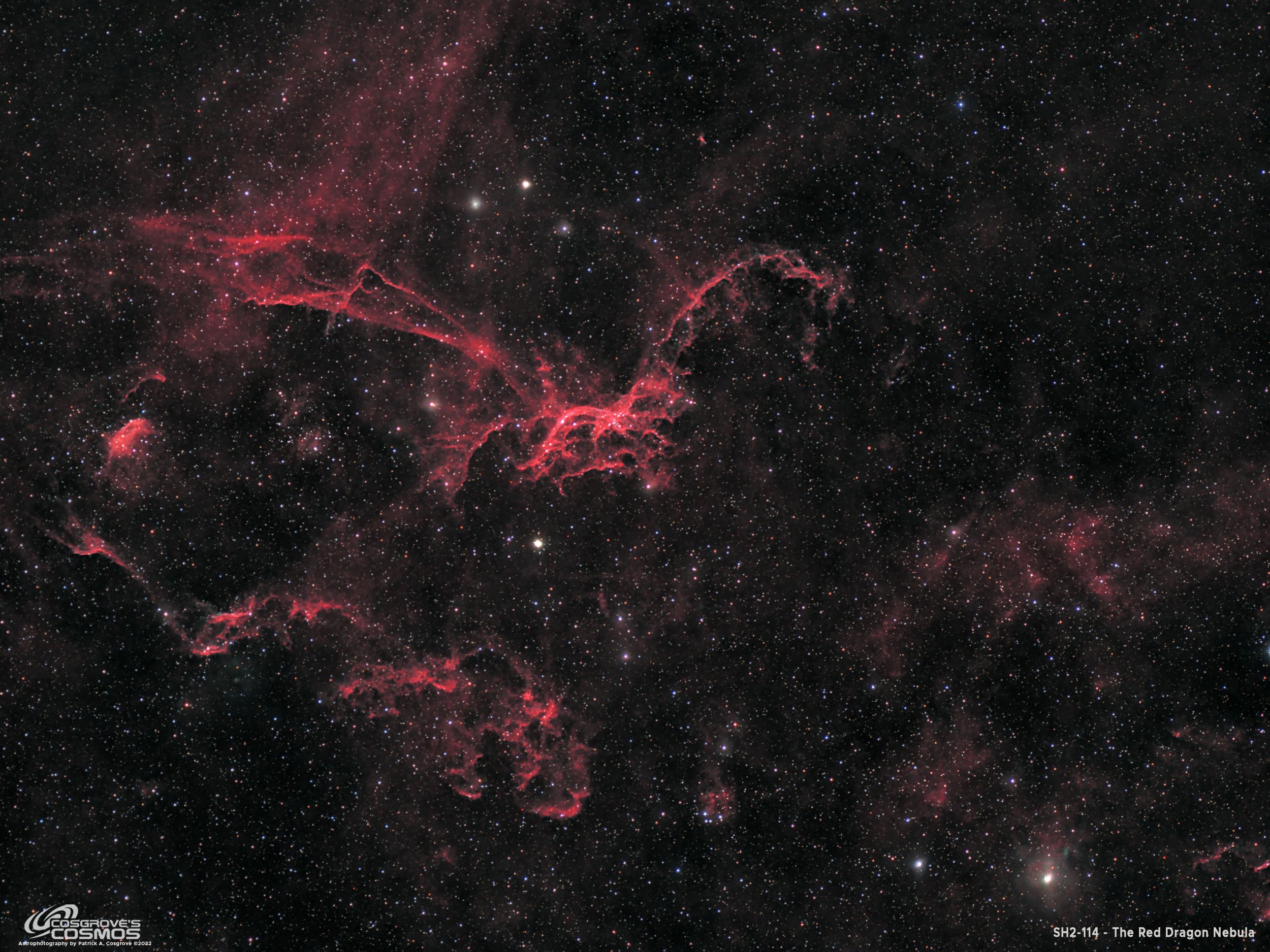
SH2-114 -The Flying Dragon Nebula - a VERY Faint Challenge Target - 17.5 hours HSSrgb
SH2-114 - The Flying Dragon Nebula - is an extremely faint emission nebula found in Cygnus. This has proven to be a challenging target. Primarily shot as a Bi-Color Narrowband Ha/S2 image, I found it was very hard to see the nebula in a single 5-minute sub! I ended up going back to capture more data over 8 nights in total spanning two moonless cycles. I also collects RBG data so that I could replace the stars with natural color RGB stars. two moonless cycles of the moon to capture data over 8 nights. I ended up with a total of 17.5 hours - my longest integration to date! And still it was a challenge to process this image!
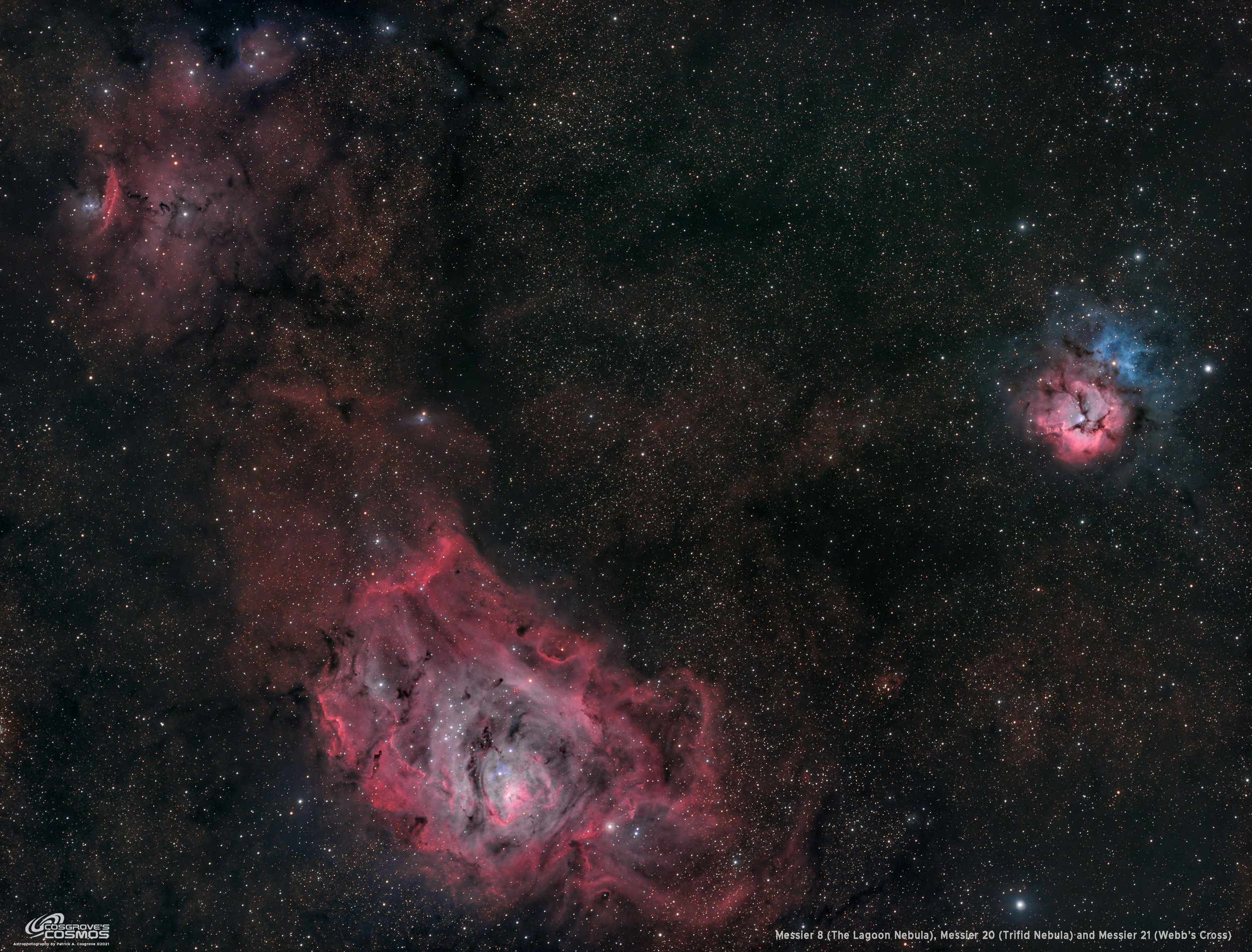
Messier 8, 20, and 21: A Rich Region in Sagittarius - 3.9 hours in HaRGB
This imaging project is a group photo taken in a rich portion of the constellation Sagittarius. It is the result of just 4 hours of LHaRGB integration. In this group, you can see Messier 8 (The Lagoon Nebula), Messier 20 (The Trifid Nebula), and Messier 21 ( Webb’s Cross). Also seen is the “Fist” shaped nebula on the upper left that is most strongly associated with IC 4685. This was taken with my Askar FRA400 widefield scope platform.
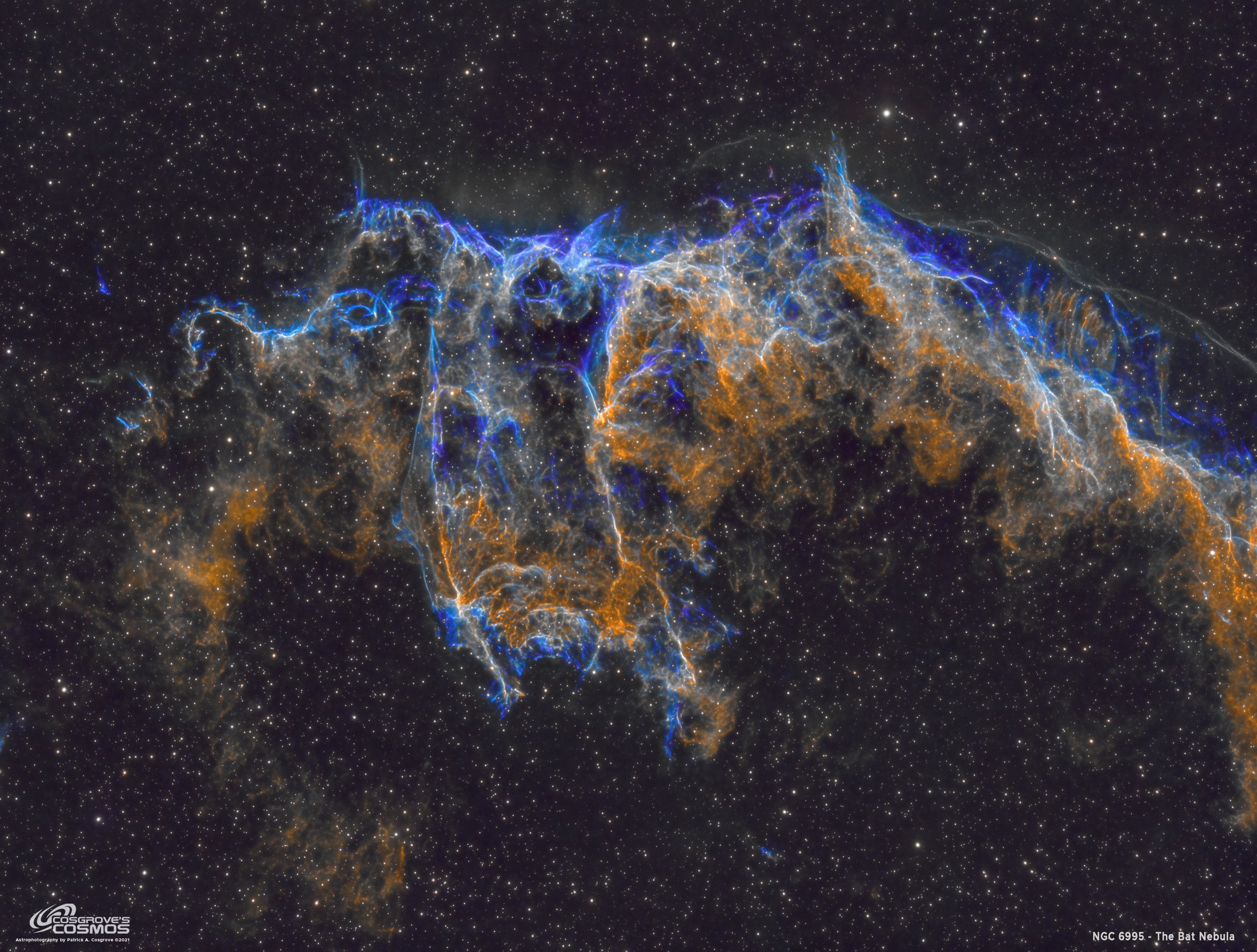
NGC6995/IC1340 - The Bat Nebula! - 13.9 hours in SHO
The Bat Nebula is actually a small portion of the Eastern Veil Nebula, designated as either NGC6995 or IC 1340. This is a close-up of a fragment of a supernova remnant located 2400 light-years away in the constellation of Cygnus. This is a 13.9-hour integration in narrowband using my William Optics 132mm FLT APO scope and the ZWO ASI1600MM-Pro camera. The deep integration produced some wonderful data of a region of the sky that is both subtle and complex at the same time. Look at it in full resolution to experience this amazing part of the sky!

Messier 57 - The Ring Nebula - 14.7 hours in LHaRGB - Capturing the Outer Ring!
Messier 57, the Ring Nebula has long been a visual favorite of mine. It is also a target that I have shot two times before with poor results due to its small size. This time I wanted to try to do the best job I could, given the limitations of my current gear. I also wanted to get a really long integration. Finally, I wanted to add Ha data in an attempt to capture the red outer gas rings that are not seen visually and often not seen in the typical amateur images. While I ran into problems on the way, did pretty well in meeting my goals. See the full post for the entire story!
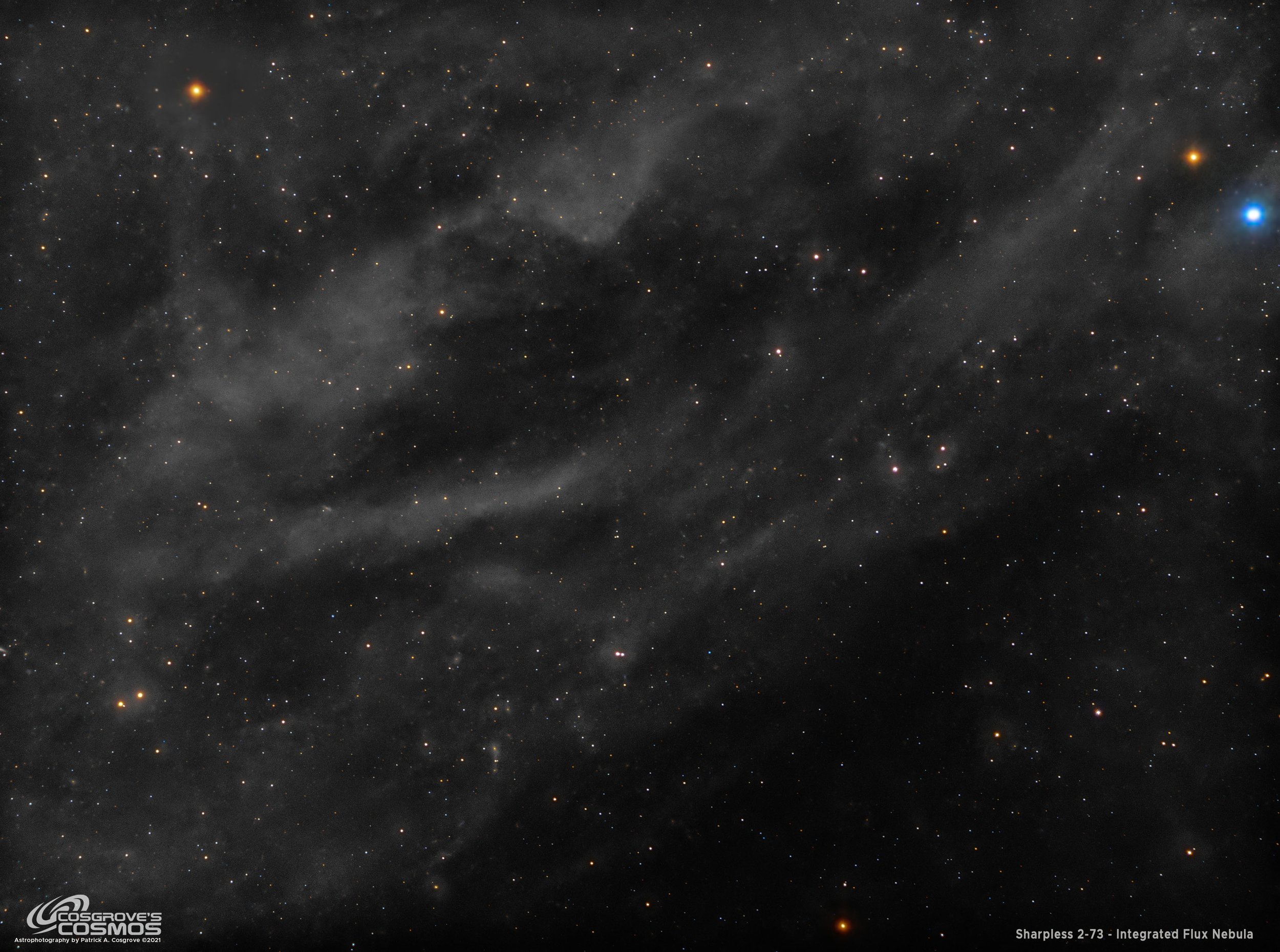
SH2-73 - An Integrated Flux Nebula in Hercules - 9.8 hours in LRGB
SH2-73 was originally cataloged as an emission nebula. This was a mistake - it is actually a reflection nebula, illuminated by the light of the entire Milky Way Galaxy! This makes it an Integrated Flux Nebula, or IFN.
have tried and failed to capture IFN in the past so here is another effort. Just shy of 10 hours of integration - long for me with my tree situation, but still way too short for IFN. I have finally gotten an image of an IFN - even if it is not a very good one!
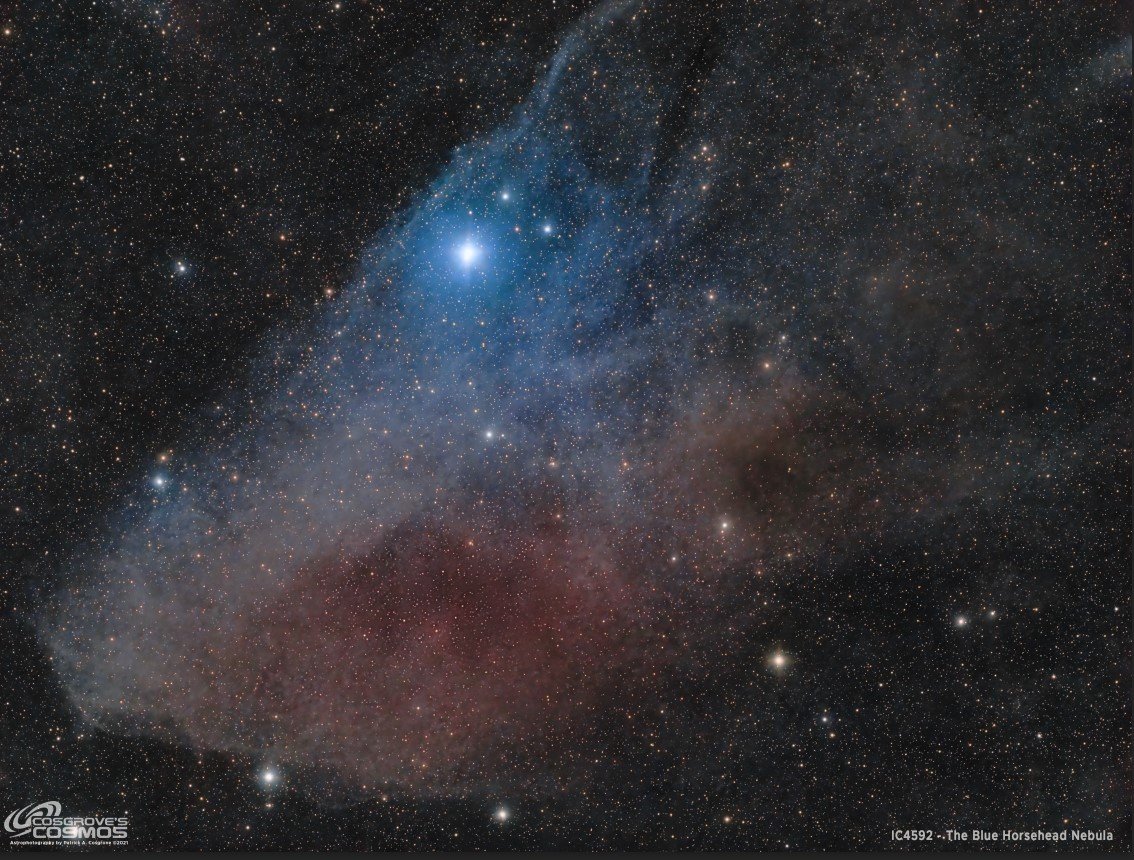
IC 4592 - The Blue Horsehead Nebula - 4.5 hours in LRGB
IC 4592, The Blue Horsehead Nebula is a faint reflection nebula located 400 light-years away in the constellation of Scorpius. This target is very large, measuring 1.5 x 3 degrees across was difficult to fit into the frame of my Askar FRA400 Astrograph! This beautiful and seldom imaged target was a challenge for me as it was located very low in the southern sky in an area with the smallest gap between my tree lines. About one hour of data was collected each night over four nights to produce this image.
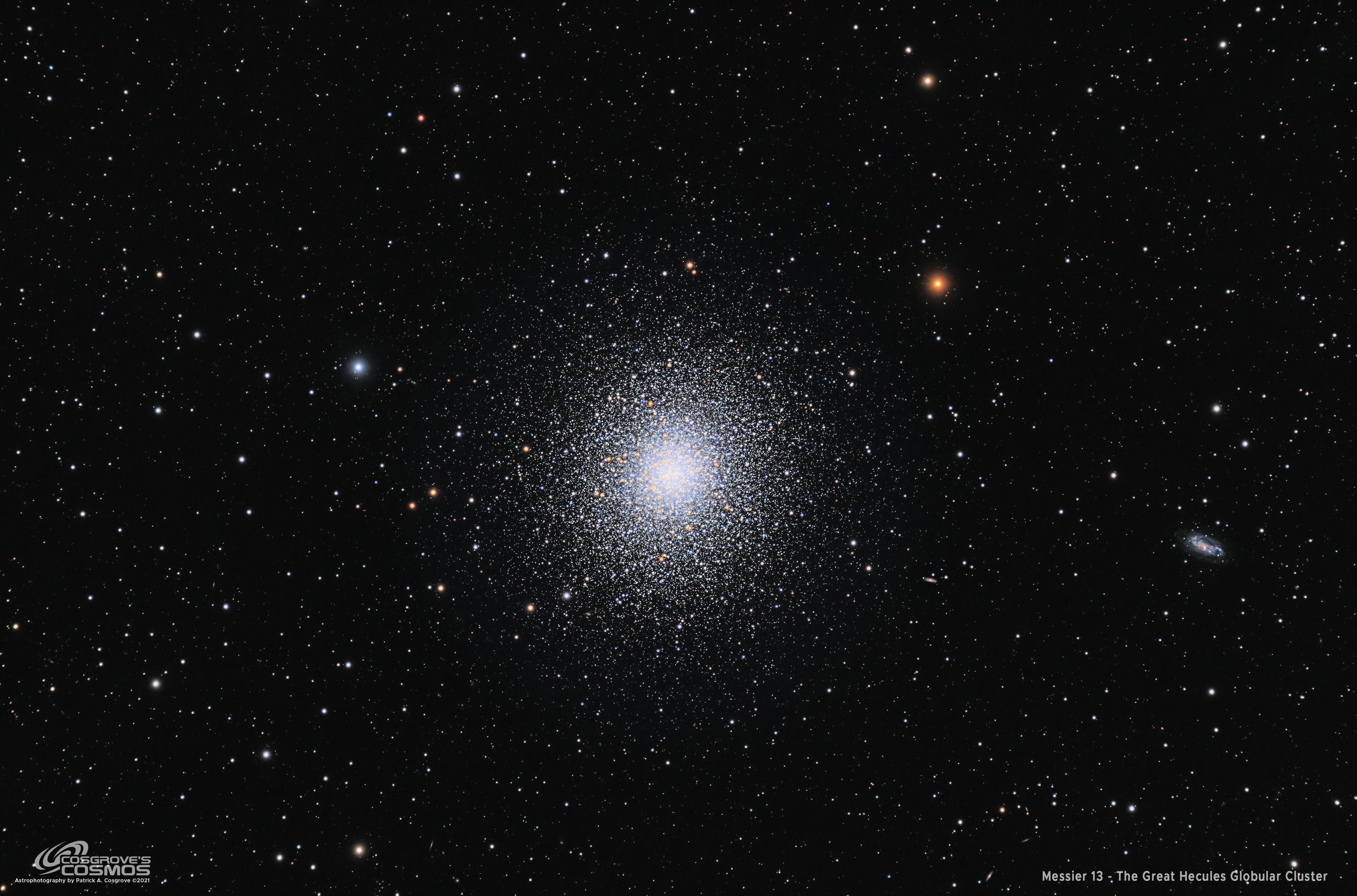
Messier 13 - The Great Hercule Cluster - 8.5 hours in LRGB - Super Sharp!
Messier 13 - the Great Hercules Cluster - is one of the finest examples of a Globular Cluster that can be found in our skies. It consists of a giant ball of 100,000-500,00 stars packed into an area 145 light-years across. M13 can be found between 22,000 and 25,000 light-years away in the constellation of Hercules.
This is a 5.6 8.5 hour integration in LRGB using my Astro-Physics 130mm scope the ZWO ASI2600MM-Pro camera. This is the fourth time I have shot this target and this one is clearly my best - displaying a remarkable sharpness in detail.
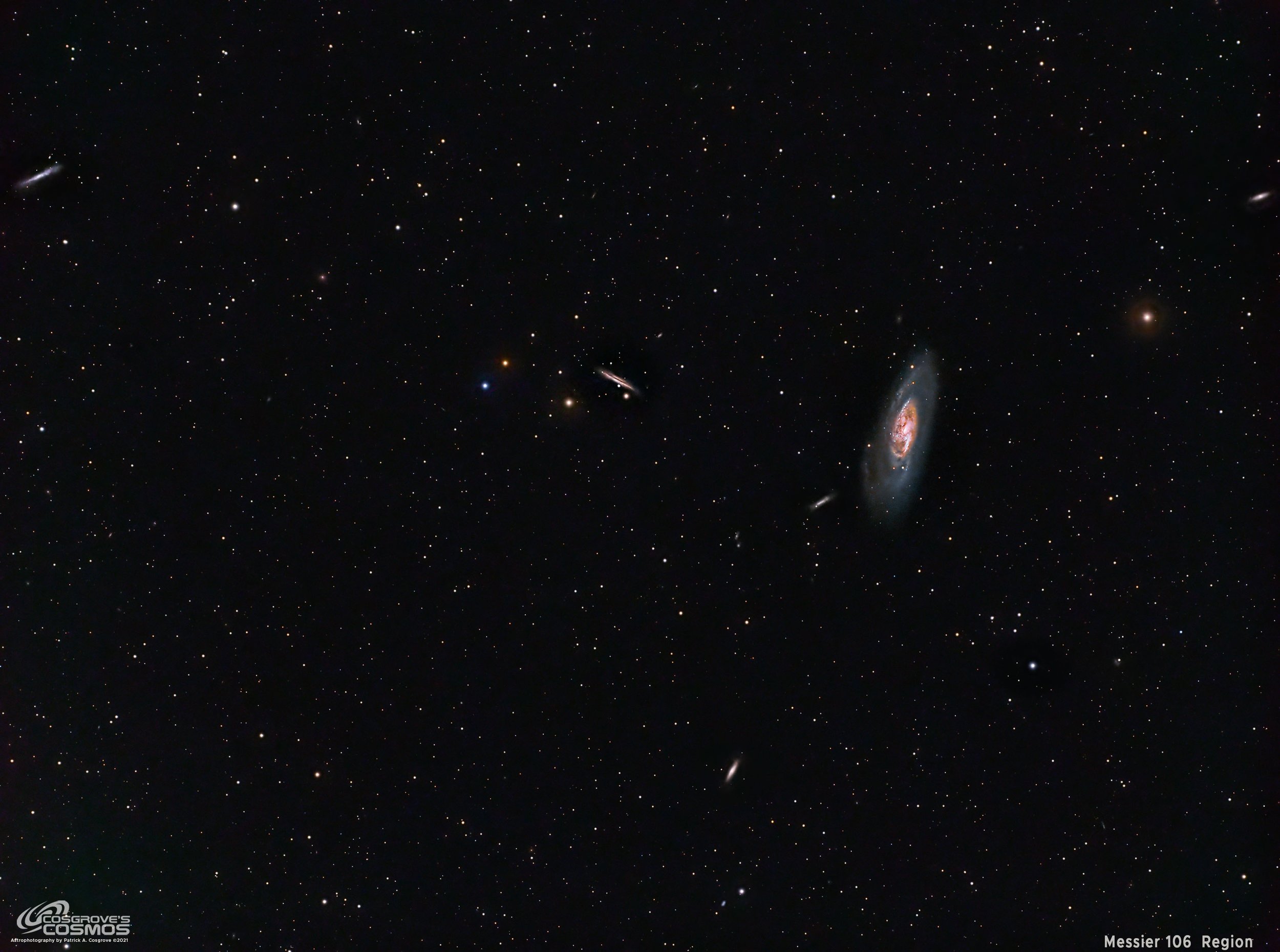
Messier 106 Region - 5.7 hours LRGB
Messier 106 is a galaxy in Canes Venatici, located 20-25 million light-years away.
Galaxy Season is challenging time to find targets when you are dealing with a widefield telescope. I finally decided to image the region around M106 as it contains a host smaller galaxies.
This is a 5.6 hour integration in LRGB using my Askar FRA400 Astrograph and the ZWO ASI1600MM-Pro camera.

Messier 64 - The Black Eye Galaxy - 2.6 hrs in LRGB
Messier 64 - The Black Eye Galaxy is the result of 2.6 hours of LRGB data taken with my William Optics 132 mm platform and the ASI1600MM-Pro mono camera. This famous galaxy is located 17 million light-years away in the constellation of Coma Berenices. This is my second attempt with this target - the first being taken two years ago. I am pretty happy with the new results!
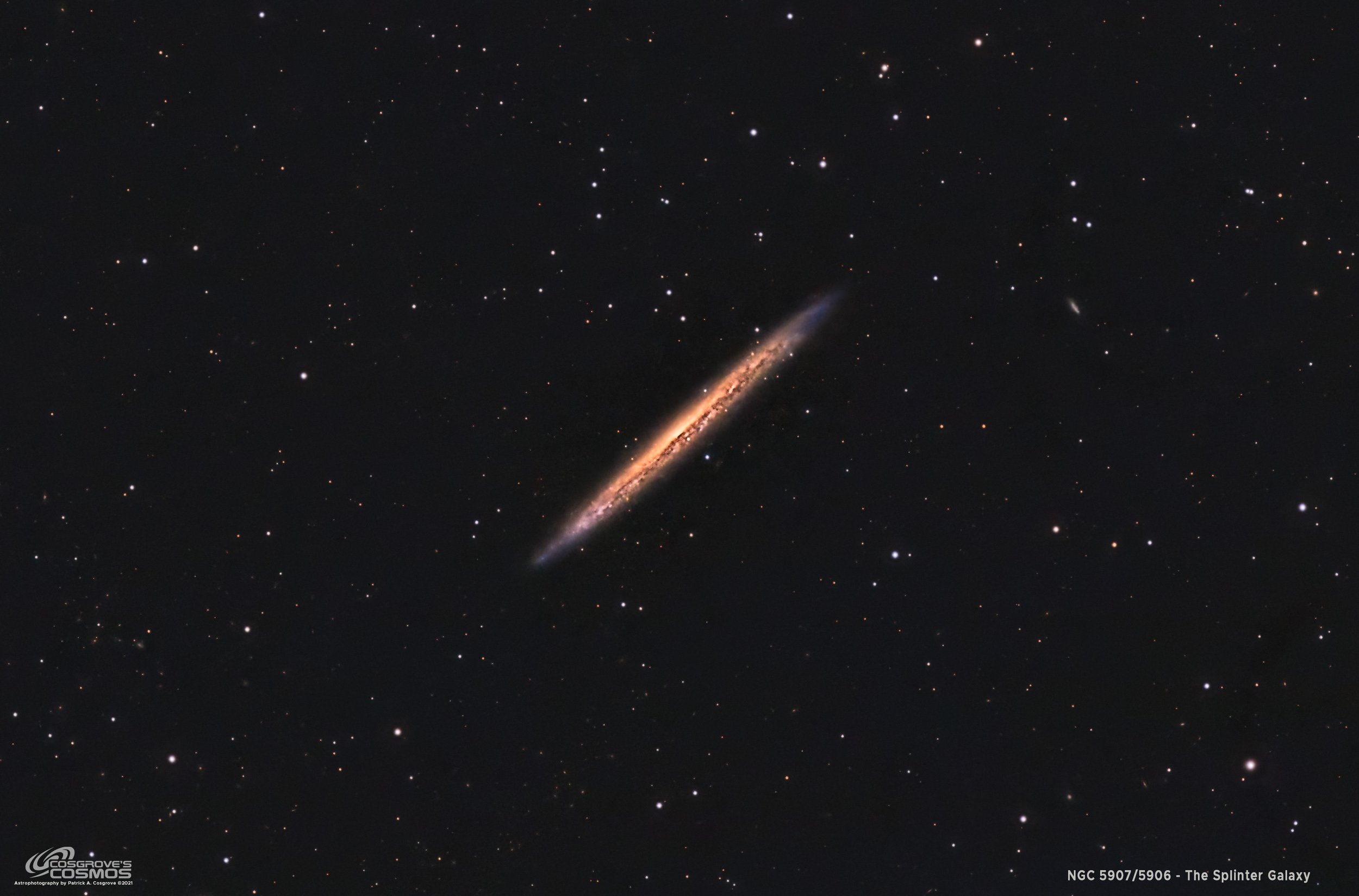
NGC 5907/5906 - The Splinter Galaxy - 8 hrs in LRGB
NGC 5907 -The Splinter Galaxy - is another example of an edge-on Spiral galaxy that displays significant dust lane detail across its middle. Its located 54.5 million Light years away in the constellation of Draco. This was shot with my Astro-Physics 130mm with the ASI2600MM-Pro camera. 8 hours of integration in LRGB. It was a real challenge to pull out the details from this very small galaxy.
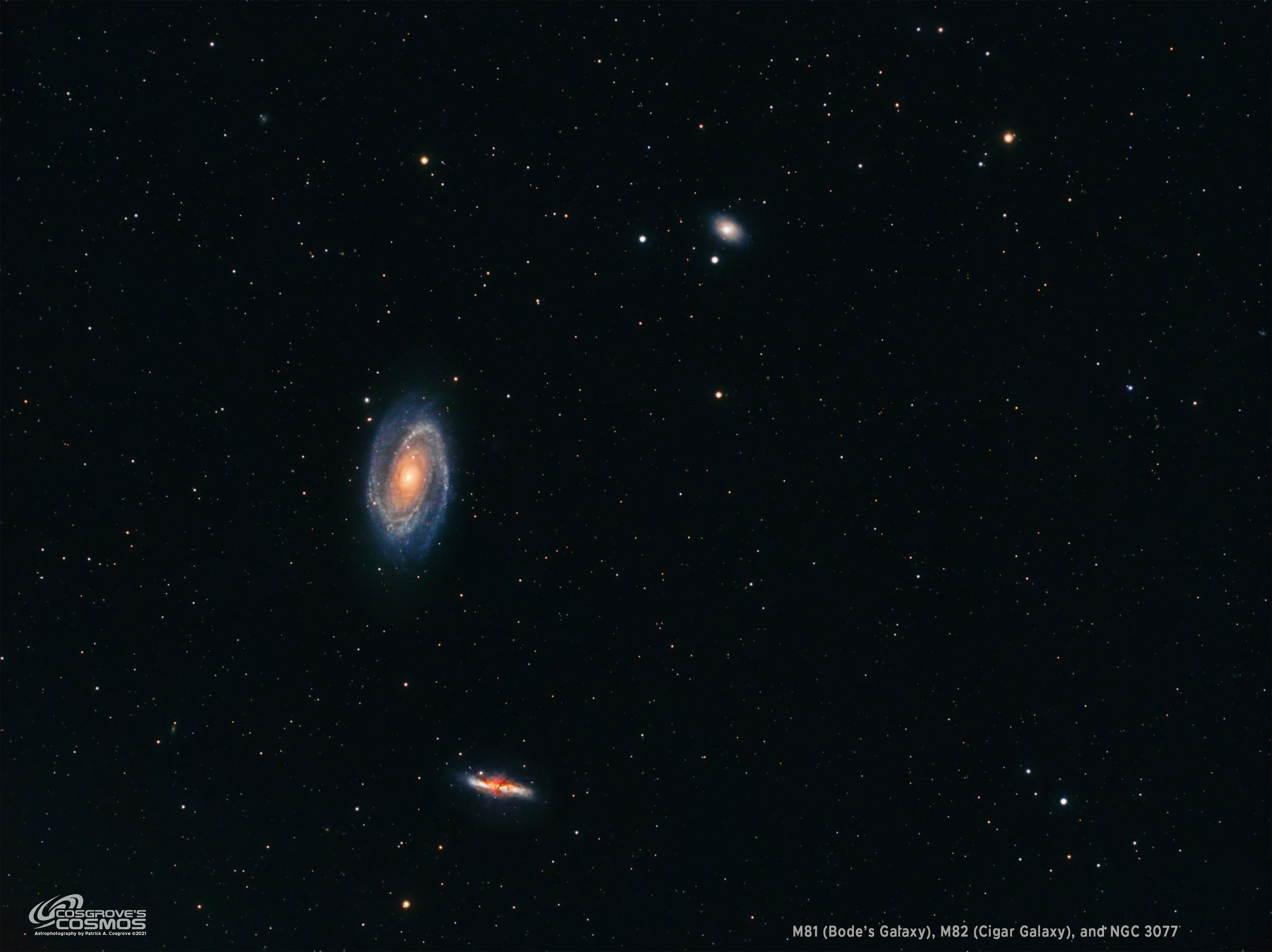
Messier 81/82 Wide Field: 3.5 hours LRGB - A Failed Quest for IFN!
I decided to try using my widefield Askar FRA400 platform to image the region around M81 & M82 to try and capture IFN (integrated Flux Nebula). This effort failed miserably! The resulting image was not too bad, but I was not able to get the kind of integration needed to capture this elusive feature! While this was a major disappointment, the resulting image shows M81, M82, and a third small galaxy NGC 3077 in a very nice part of the sky.

NGC 4565 - The Needle Galaxy - 11.5 hours in LRGB
NGC 4565, The “Needle Galaxy” is a classic example of an edge-on spiral galaxy. This is one of my favorite galaxies and I was very happy to finally have the chance to shoot this target! This was the result of 11.5 hours of LRGB data integration taken with the Williams Optics 132mm FLT APO scope, the CEM60 mount, and the ASI1600MM-Pro camera.
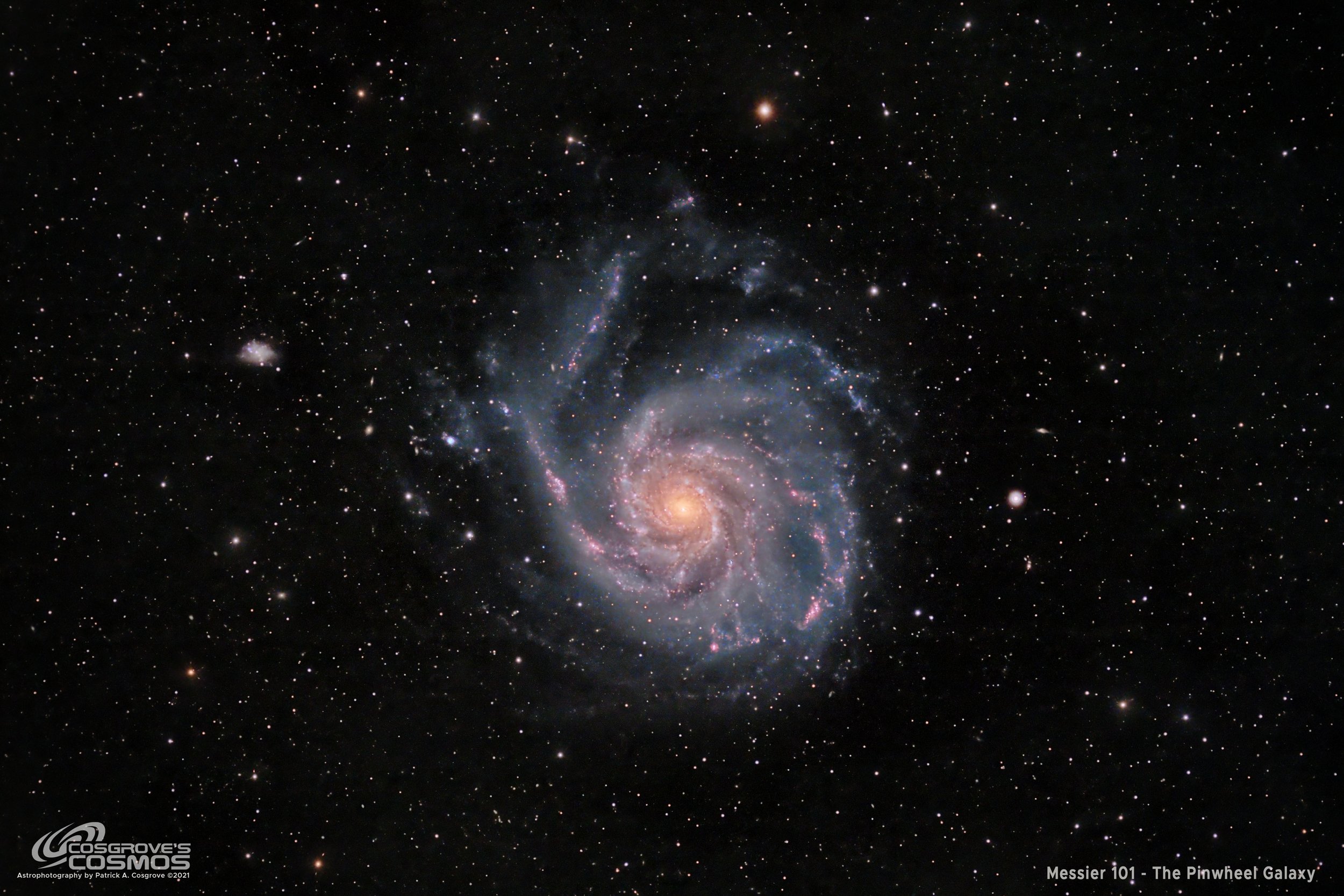
M101 - The Pinwheel Galaxy in LHaRGB (11 hours)- a third attempt!
My third attempt shooting Messier 101 - the Pinwheel Galaxy. My first was in 2020 using an OSC camera and a two-hour exposure. Not bad for a first attempt. My second was in 2021 using an ASI1600MM-Prop mono camera. 15-hour integration! However many data problems and a very poor final results. This time around I am using my Astro-Physics 130mm with the ASI2600MM-Pro camera. 11 hours of integration in LHaRGB.

IC 2177 - The Seagull Nebula in SHO - with just 2 hours!
IC 2177, better known as the Seagull Nebula, is a rich HII emission region located 3650 light-years away located new the borders of the constellations Canis Magor and Monoceros.
This image results from slightly over 2 hours of narrowband integration on my 400mm wide field scope. This short integration time results from bad weather and sky access limitations due to trees on my property.
Careful processing was able to produce a reasonable image despite the lack of integration time.

NGC 2359 - Thor’s Helmet in SHO ~only 2.5 hours!
NGC 2359 - Thor’s Helmet - is my first image of 2022. This image is the result of 2.5 hours of narrowband data - limited by weather and the fact that this target is very low in the sky for me and access is very limited each night due to trees on my property. I had hoped to gather more data but at this point, it is now too late in the year. So my challenge was to see what I could do with such limited data. detailed processing strategy and log provided!
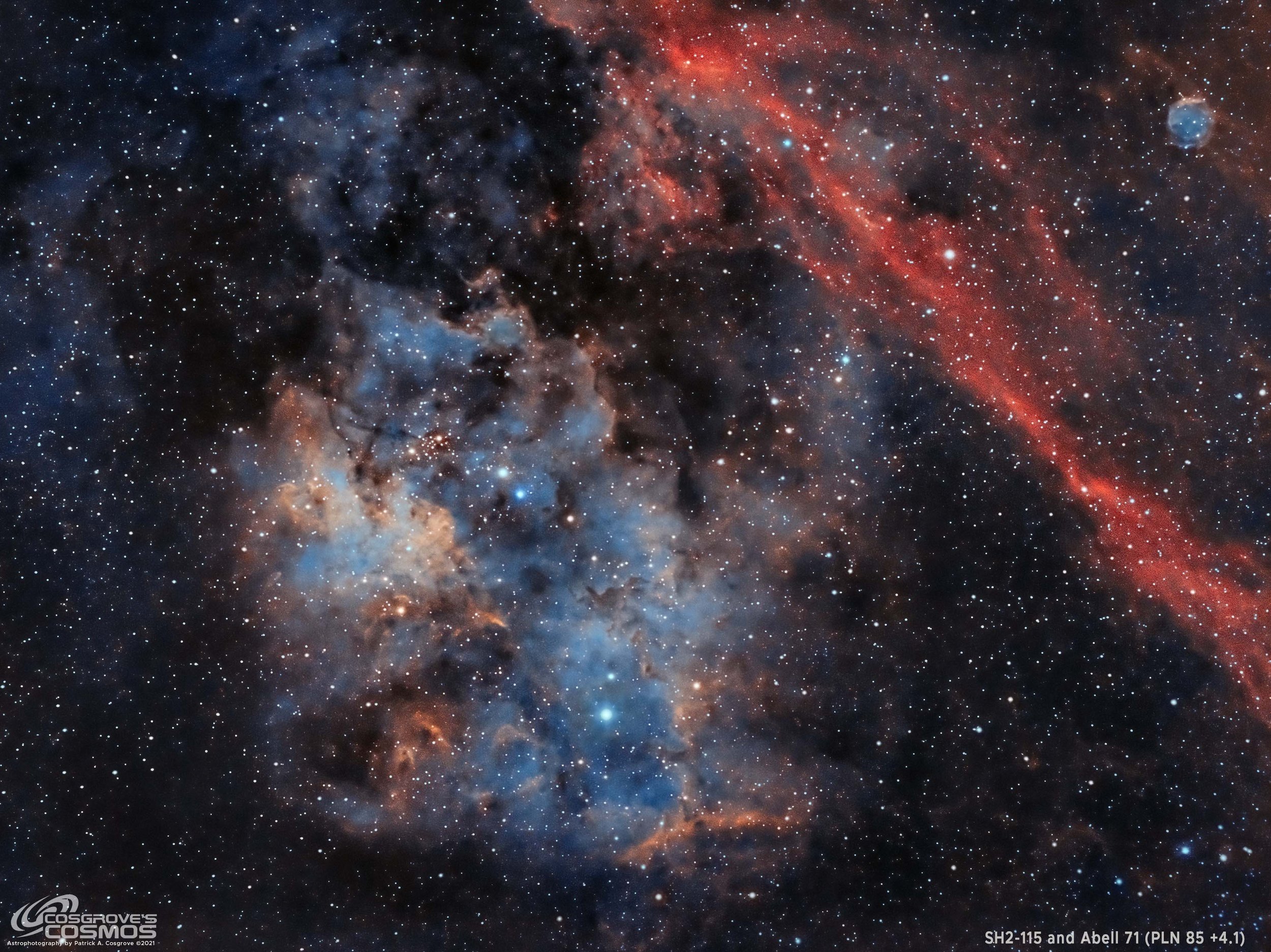
SH2-115 and Abell 71 - 4.0 hours in SHO
This is the 10th and final image to come from a capture season that occurred this past November. SH2-115 is a large emission nebula located in Cygnus. This was the result of 4 hours of narrowband data integration taken with the Williams Optics 132mm FLT APO scope, the CEM60 mount, and the ASI1600MM-Pro camera.

NGC 7293, The Helix Nebula ~4.5 hours of LHaRGB: Dealing with “Bad Data”
This was my second attempt to capture NGC 7293 - the Helix Nebula - located in the constellation of Aquarius. This time I had high expectations as I was using longer integration times, a longer focal length scope, and a new generation ASI2600MMPro camera. However - LOTS of things went wrong with this capture and its data came out pretty compromised! Some intense image processing minimized the impact of these problems - but the final image falls far short of my expectations. A good example of what can go wrong!
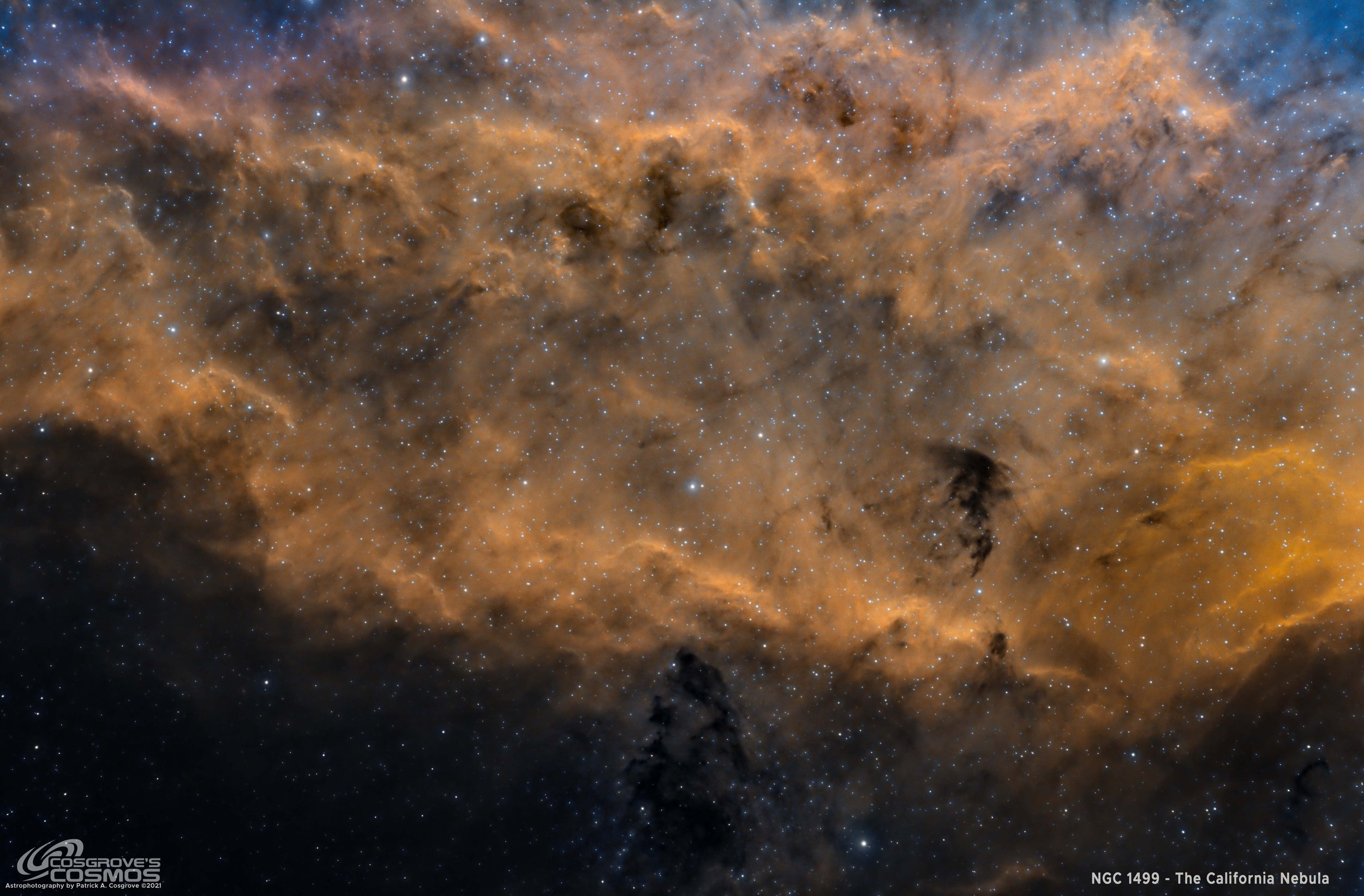
NGC 1499: A Narrow Field Shot of the - California Nebula - in SHO - 10 Hours
A narrow field view of NGC 1499, The California Nebula, which is a rich H2 region located 1,00 light-years away in the constellation of Perseus. This was shot in narrowband with total integration of 10 hours.
This was shot with the AP130 platform using the ZWO ASI2600MM-Pro Camera.
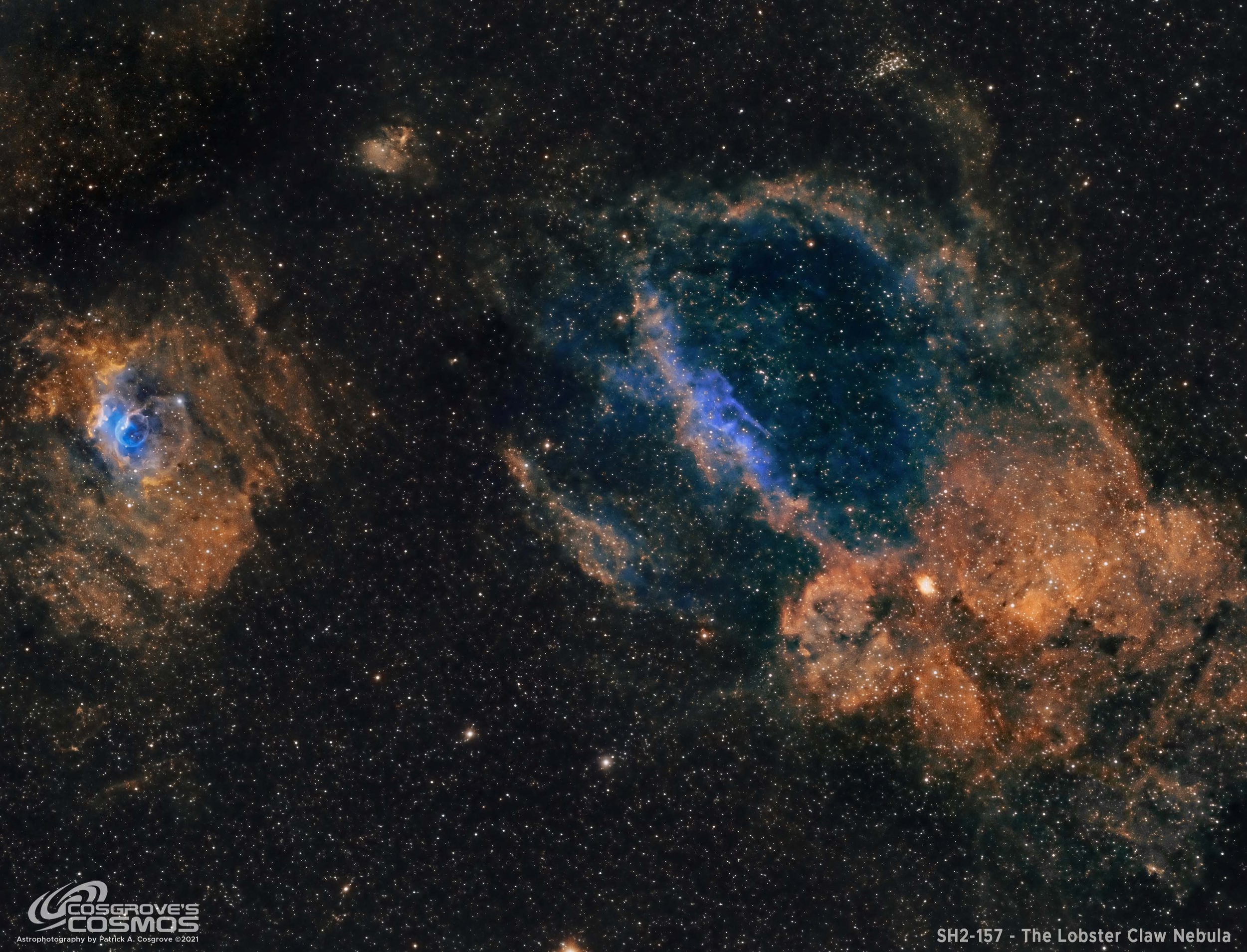
SH2-157 The Lobster Claw Nebula - with NGC 7635 (The Bubble Nebula) in SHO - 4.25 hours.
SH@-157, The Lobster Claw Nebula, is located 11,000 light-years away in the constellation of Cassiopeia. A faint object, this was captured on the night of November 8th when I hoped to have two more nights of clear weather. That did not happen and this image was created with only 4.25 hours of data. I hope to revisit this object, collect more hours and do it justice. This was shot on my wide-field FRA400 rig and is rendered in the Hubble SHO palette.
